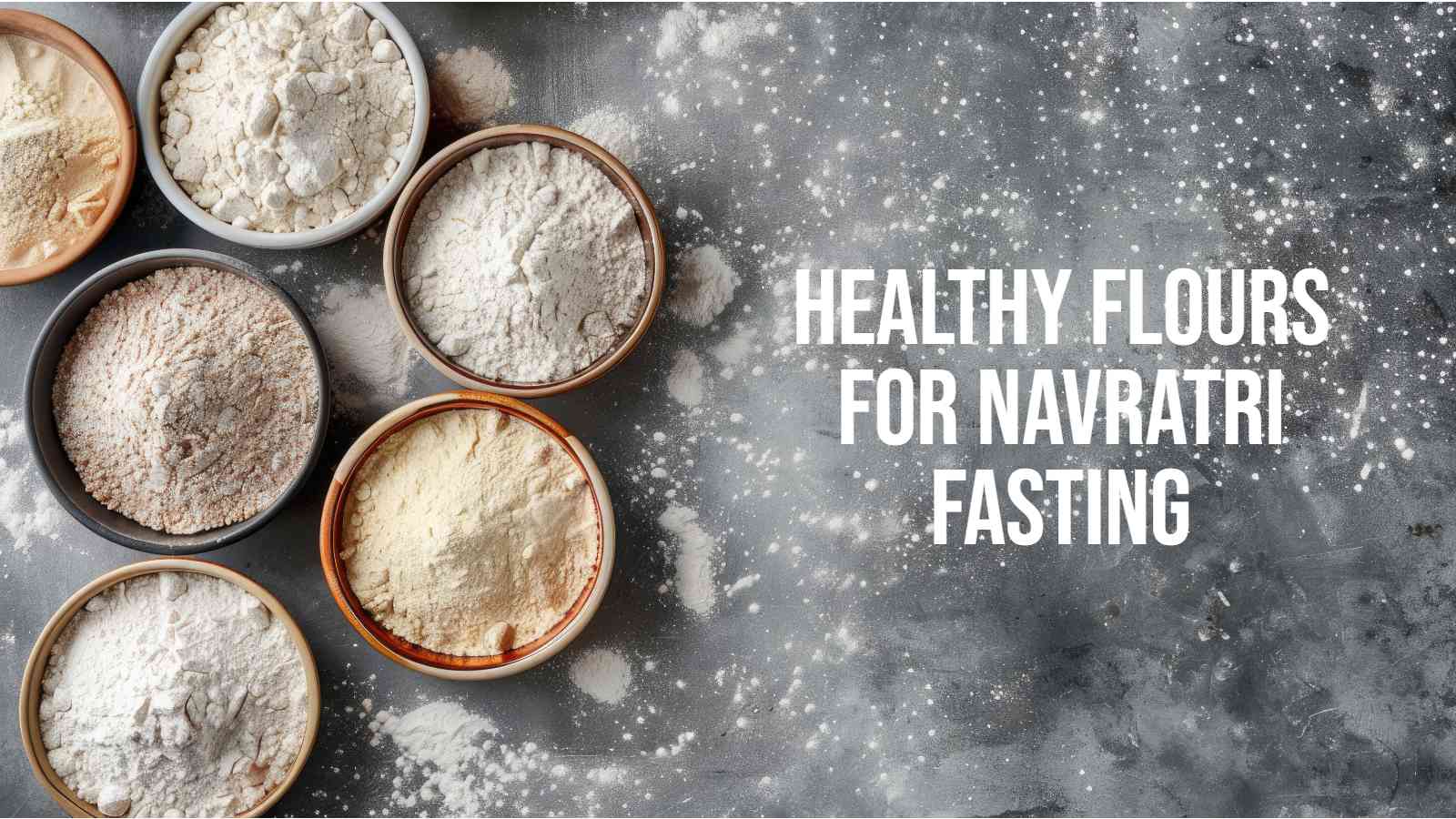While kuttu atta is one of the most popular flours consumed during a Navratri fast, it is not the only option. You can also eat these 5 flours for Navratri fasting.
Navratri is a festival that is celebrated for nine days dedicated to Goddess Durga. For many, it is a time to cleanse the body and spirit by sticking to satvik foods—pure and simple ingredients that nourish without weighing us down. During this festival, people often swap regular grains with specific flours or atta that are fasting-friendly. While one popular option is Kuttu, or buckwheat flour, there are several other nutritious alternatives available as well. These flours for Navratri fasting are healthy and will not break your fast.
5 flours for Navratri fasting
Here are some of the healthy flours for Navratri fasting you may try:
1. Buckwheat flour or kuttu atta
Do you wait for Navratri fasting to enjoy kuttu ka atta (buckwheat flour)? Turns out, you should actually be eating it year-round! Packed with protein and fibre and low in calories, buckwheat is easier to digest than regular wheat flour, as per Food Science and Nutrition. It is a great source of complex carbs and antioxidants and helps lower blood sugar and cholesterol. Plus, it is gluten-free and enhances nutrient absorption and boosts metabolism. With its low glycemic index, buckwheat can even support weight loss. So, why not make it a regular part of your diet?

2. Sago flour or sabudana atta
If you are looking for a light yet energising meal during your Chaitra Navratri fasting, sabudana flour is a great choice. Sabudana, or sago, is naturally gluten-free, making it an excellent option for those looking to manage their weight. While it may not be packed with vitamins or minerals, it is rich in starch, providing a quick source of energy without adding many calories to your diet. While sabudana khichdi, kheer, vada, and papad are widely consumed during Navratri fasting, with sabudana flour, you can prepare puris, parathas, or rotis, which pair perfectly with potato-based dishes.
Also read: Navratri: Is eating aloo and sabudana healthy during fasting?
3. Amaranth flour or rajgira atta
If you are looking to try something new this Navratri fasting, try amaranth flour—an ancient grain packed with health benefits. One of its major advantages is that it is naturally gluten-free, making it a great choice for those with celiac disease or gluten intolerance. In addition, research published in Medline Plus highlights that most of the fibre in amaranth is insoluble. This type of fibre helps move food through your digestive system, which can improve digestion overall. Amaranth is also rich in essential minerals, protein and antioxidants—key nutrients that can help regulate blood pressure and protect your body from harmful free radicals.
4. Water chestnut flour or singhara atta
Water chestnut, also known as singhara, is a water-based vegetable that is low in starch but packed with nutrition. It is an excellent source of dietary fibre, potassium, manganese, vitamin B6, riboflavin, and copper. Vitamin B6, in particular, plays a key role in maintaining healthy protein levels (amino acids) in your blood, which strengthens your immune system and helps your body fight off infections. While singhara can be enjoyed on its own, especially during Navratri fasting, water chestnut flour is another great way to incorporate it into your diet. With its nutty flavour, you can use it to create a variety of dishes, from pancakes and puris to desserts.

5. Farali flour
Farali flour is a blend of different gluten-free flours, including barnyard millet, amaranth, and others, making it a popular choice during Navratri fasting. This hybrid flour combines two or three gluten-free grains, making it a great option for those with gluten intolerance or celiac disease. It is not only easy to digest but also provides essential nutrients, particularly fibre. Farali flour is often recommended for people managing diabetes, heart issues, or weight concerns, offering a nutritious meal during the festival.
Why should you skip fried foods during Navratri fasting?
During Navratri fasting, it is easy to unintentionally gain weight if you are not mindful of what you are eating and when. To maintain your energy and overall health, it is best to avoid fried foods. Research published in the European Food Research and Technology highlights that fried foods tend to be high in calories and can contain harmful compounds. The frying process creates toxic substances that are not great for your body. So, it is a good idea to skip things like puris, vadas, samosas, fried papad, chips, and fries during your Navratri fasting to keep your energy levels balanced and support your health.
So, make sure you eat healthy during fasting!
#healthy #flours #Navratri #fasting




